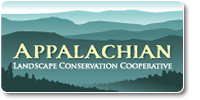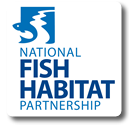Riparian and Stream Habitat Restoration for 14 Species in the Middle Fork Saline River Watershed, AR
| Project Start Date | |
|---|---|
| Project Leader | |
| Organization |
This project consisted of riparian and stream habitat restoration for 14 Species in the Middle Fork Saline River Watershed, Arkansas
Background
The Saline River is another both beautiful and important water body. It provides critical habitat for wildlife and harbors a suite of globally ranked species and state designated species of greatest conservation need. Due to these qualities, the Saline River has been dubbed a high priority by both the State and federal governments. For instance, it has been designated an Extraordinary Resource Waterbody and Ecologically Sensitive Waterway by the Arkansas DEQ. In addition the river is on the state registry of natural and scenic rivers and designated an Ouachita Zone Quality Stream for Smallmouth Bass by AGFC. Not only that, but it has been named a priority watershed by the Environmental Protection Agency (EPA) and the Arkansas Natural Resource Commission (ANRC) with suspended sediment identified as a major problem in the watershed.
Due to its high level of importance and recognition, the Saline River was selected to receive funding for a restoration project to directly address the needs of 14 aquatic species of greatest conservation need, including 11 mussel species, 3 fish species and a host of game species including the smallmouth bass, largemouth bass, and spotted bass.
More specifically, the Nature Conservancy conducted surveying on the Middle Fork resulted in a prioritized reach being chosen for stream and riparian restoration.This reach had significant issues such as:; High bank erosion rates on both banks, excessive deposition as both longitudinal and
transverse bars, annual shifts of bed location, habitat loss and a total sediment loss in one year ≈ 1772 tons ≈ 71 dump truck loads.
The reasons for these issues included the removal of streamside vegetation, housing dhvelopment, Historical gravel mining, gravel roads, sediment loading from point and non-point pollution, and unsuitable stream crossings.
To address these issues, the Nature Conservancy sought to reduce the amount of sediment in the channel and improve habitat for many key sensitive species for miles downstream of the disturbed site, demonstrate Natural Channel Design as a successful restoration technique to the private landowners, land trusts, and other watershed stakeholders, restructure a braided channel into a single functioning channel system, improve approximately 1 mile of in-stream and riparian
habitat, restore 32 acres of riparian and floodplain area, exclude 200 head of cattle from the stream and create alternative water sources
Completed

Construction
Eroding Bank

In order to restore the eroding bank, TNC Installed four stream stabilization structures (J-Hook vanes) to control erosion and provide inchannel stability for approximately 1,900 feet of eroding stream bank. They also installed a toe-wood structure at the base, or toe, of Bend 2’s outer bank with the use of approximately 35 large hardwood trees. Woody vegetation was transplanted atop the toe-wood structure which included willow, alder, and sycamore. In addition, an 80’ oak tree from the stream channel was removed to prevent future divergence of flow within the site.
Channel and Riparian Restoration
The braided channel was also restructured into a single functioning channel system improving in-stream and riparian habitat. To restore the riparian habitat, TNC planted vegetation and completed riparian fencing which excluded at least 350 head of cattle from the stream as well as constructed 2 off-watering sources for the livestock. Bioengineering techniques were also put in place to maintain natural hydrological processes, aesthetic values, and instream habitat to support the natural biological community.
Monitoring
The Nature Conservancy worked with the University of Central Arkansas to establish pre-project biological monitoring of the site. In the pre-project monitoring TNC established a reach upstream, throughout the site, and downstream of the site, as well as a reference site on the Alum Fork Saline River. Post project monitoring will occur years two and five following the restoration activities. It is at this time TNC will have a better idea if the target species were positively affected from this project. At the current time, post-project survey tells us that all the natural channel design parameters are within the natural range of variability as defined by our reference reach data. This indicates that the dimension, pattern, and profile of the new stream channel are in reference condition. The vegetation this spring and summer has had an amazing amount of growth indicating that our long-term channel stability is greatly enhanced from the pre-project condition. TNC intends to monitor the stability of the channel through permanent cross-sections and longitudinal profiles, each year for the next five years. These outlined monitoring efforts will tell us over time how the stream and the communities of species within this reach are responding to our efforts.
The Nature Conservancy worked with the University of Central Arkansas to establish pre-project biological monitoring of the site. In the pre-project monitoring TNC established a reach upstream, throughout the site, and downstream of the site, as well as a reference site on the Alum Fork Saline River. Post project monitoring will occur years two and five following the restoration activities. It is at this time TNC will have a better idea if the target species were positively affected from this project. At the current time, post-project survey tells us that all the natural channel design parameters are within the natural range of variability as defined by our reference reach data. This indicates that the dimension, pattern, and profile of the new stream channel are in reference condition. The vegetation this spring and summer has had an amazing amount of growth indicating that our long-term channel stability is greatly enhanced from the pre-project condition. TNC intends to monitor the stability of the channel through permanent cross-sections and longitudinal profiles, each year for the next five years. These outlined monitoring efforts will tell us over time how the stream and the communities of species within this reach are responding to our efforts.
Education and Outreach
 Though the project site is rather remote, the actual project construction and monitoring incorporated a large number of volunteers, and site visits were conducted for contributing partners. Several poster presentations were also given.
Though the project site is rather remote, the actual project construction and monitoring incorporated a large number of volunteers, and site visits were conducted for contributing partners. Several poster presentations were also given.
Associated Locations
| Town | zip code | county | state | congressional dist |
|---|
Barriers
| Name of barrier | Latitude | Longitude | FONS ID | FIS Project ID | FWS Acc. # |
|---|
Document Actions









